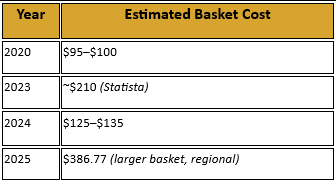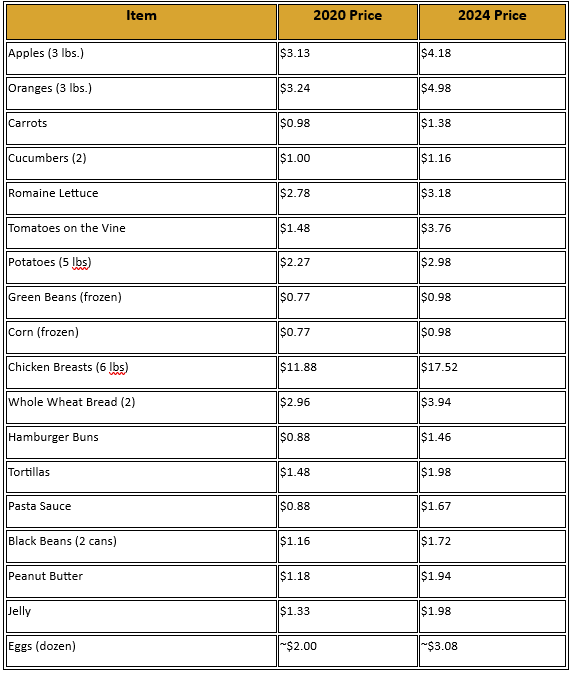How Much Have Groceries Increased Since 2020 and What You Can Do to Stretch Your Food Budget

June 25th, 2025
In recent years, families across the country have felt the pressure of rising prices. It’s not just luxury items—we’re talking about essential groceries that keep households running. For those already managing tight budgets, this shift can feel overwhelming. We’ve gathered data to show just how much prices have changed and offer practical, inclusive tips to help you save without sacrificing nourishment or cultural food preferences.
What the Numbers Say: Grocery Prices Then and Now
Since 2020, grocery costs in the United States have increased significantly, impacting people of all income levels. While inflation has affected nearly every sector, food, especially fresh, staple, and household essentials, has seen some of the steepest price increases.
Summary Table: Estimated Grocery Basket Costs Over Time

Everyday Grocery Items: 2020 vs. 2024 Price Comparisons

Key Takeaways
Grocery prices have increased 25% to 40% since 2020, depending on the region and items purchased.
Eggs have seen one of the steepest hikes—up 54%.
Dairy products (milk, cheese, butter) are up 30–36%.
Cereals and baked goods are up around 28%.
Beef prices are up ~20%, and chicken is up over 25%.
Fresh fruits and vegetables have increased by an average of 21%.
For the most up-to-date prices, visit the Bureau of Labor Statistics Bureau of Labor Statistics- Consumer Price Index.
What You Can Do: Simple, Inclusive Ways to Save on Groceries
While we can't control inflation, there are small, thoughtful actions we can take. The goal isn’t to overhaul your eating habits; it's to provide you with fundamental, accessible strategies that respect your culture, budget, and food traditions.
Before You Shop
Avoid shopping when you're hungry or thirsty. It's easy to buy more than planned.
You can plan your meals for the upcoming week, then shop only for the necessary ingredients.
Use a shopping list to avoid impulse purchases.
Where and How You Shop
Shop at affordable stores like WinCo, Grocery Outlet, and sometimes Trader Joe’s, which may offer better prices than larger national chains.
Visit once a month to stock up if stores are far from home.
Buy in bulk—especially items like spices, grains, and beans. WinCo’s bulk section offers substantial savings.
Compare prices by unit or ounce, especially large vs. small sizes.
Wise Choices That Still Feel Familiar
Can a meal use less meat? Reducing portion sizes or replacing them with lentils, beans, or tofu can lower costs while still providing enough protein.
Use culturally familiar staples like rice, tortillas, and beans in creative, cost-effective ways.
Substitute cuts of meat—buying whole chickens or cheaper cuts can stretch meals further.
Buy a Costco rotisserie chicken ($4.99) or a large pizza ($9.95) and pair it with fresh salad or vegetables for a budget-friendly family meal.
Other Helpful Tips
Print or clip coupons or use digital coupons on store apps.
Buy store-brand items, which are often made by the same manufacturers as name brands.
Check out local food pantries or cultural food programs, especially if you’re experiencing financial hardship.
Grow your own herbs or vegetables, even in small containers or window sills, to save on fresh ingredients.
You’re Not Alone! We’re Here to Help
If you or someone you know is struggling with grocery costs, Save First Financial Wellness offers personalized financial coaching and referrals to community resources. Our team of Financial Coaches can help you build a realistic grocery budget, navigate assistance programs, and find local food support that aligns with your cultural values and dietary needs.


